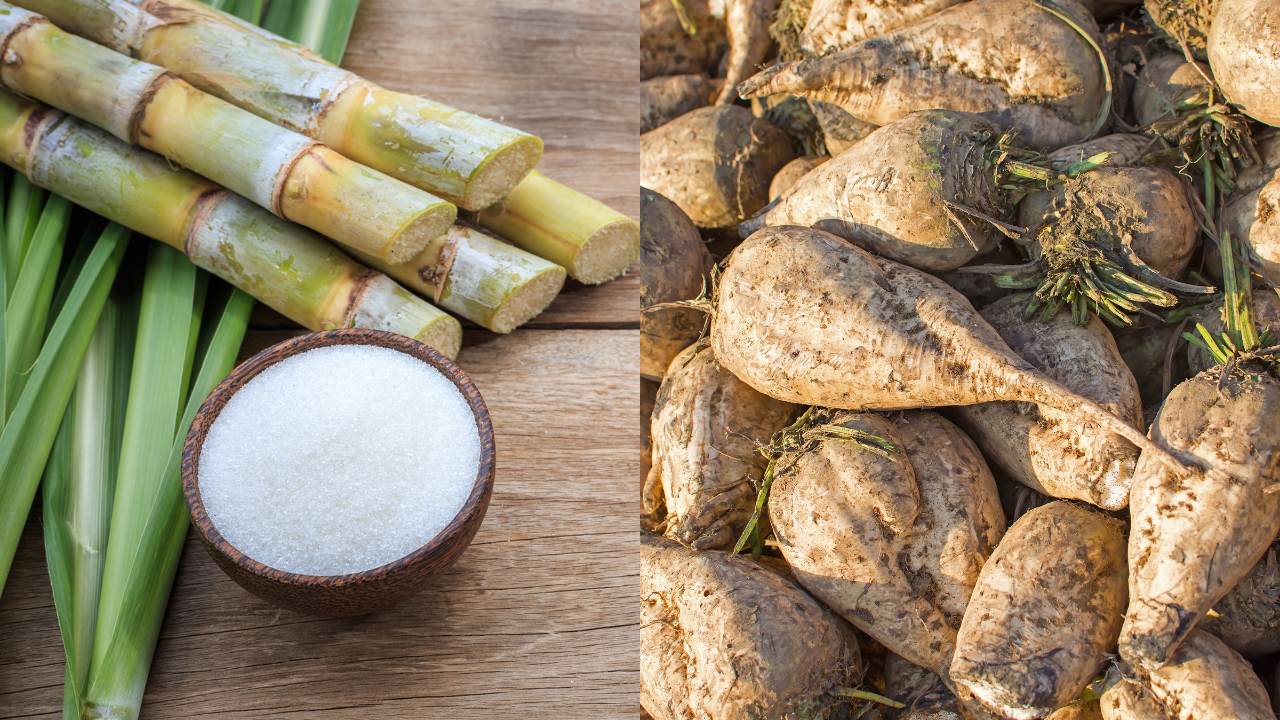Learning about beet sugar vs cane sugar can help shoppers decide which suits their needs better.
Discover the Uses and Conveniences of Beet Sugar Vs Cane Sugar in Your Daily Diet
Discovering the unique high qualities of beet and cane sugar discloses greater than just their sweetening abilities; it highlights their special effect on health and cooking arts. Beet sugar, understood for its refined taste, is frequently favored in fragile treats, whereas cane sugar, with its hint of molasses, adds splendor to durable meals. Each type holds its very own nutritional profile and glycemic implications, inviting a deeper understanding of their roles in a balanced diet plan and lasting intake techniques.
Origin and Production Processes of Beet and Cane Sugar

The distinctive environments and soil types needed for expanding sugar beets and sugarcane add to differences in their cultivation techniques and geographical distribution, affecting the business economics and sustainability of their manufacturing. beet sugar vs cane sugar.
Nutritional Comparison In Between Beet Sugar and Cane Sugar
Regardless of originating from different plants, beet sugar and cane sugar are nutritionally very comparable, both mostly containing sucrose. Each gives concerning 4 calories per gram, translating to roughly 16 calories per tsp. Structurally, both sugars are made up of about 99.95% sucrose, with very little quantities of other substances like wetness and trace element, which do not substantially modify their nutritional accounts.

Inevitably, when picking between beet sugar and cane sugar based upon dietary content alone, both deal identical advantages and downsides as they are essentially kinds of the reference same particle-- sucrose, providing fast energy without various other nutrients.
Effect on Health And Wellness: Glycemic Index and Caloric Material
Discovering further into the results of beet sugar and cane sugar on health, it is essential to consider their glycemic index and more information caloric material. Both sugars are categorized as sucrose, which consists of glucose and fructose. This structure leads them to have a similar effect on blood sugar levels. The glycemic index (GI) of both beet and cane sugar is around 65, categorizing them as high-GI foods, which can cause quick spikes in blood sugar levels. This is a vital aspect for individuals managing diabetes mellitus or those trying to support their energy levels throughout the day.
Each sort of sugar contains around 4 calories per gram, making their caloric content matching. For those keeping track of calorie intake, especially when taking care of weight or metabolic wellness conditions, understanding this equivalence is vital (beet sugar vs cane sugar). Extreme consumption of any kind of high-calorie, high-GI food can contribute to wellness problems such as excessive weight, heart illness, and insulin resistance.
Environmental and Economic Considerations of Sugar Manufacturing
Beyond health and wellness impacts, the manufacturing of beet and cane sugar also increases substantial environmental and financial issues. Sugar beet growing tends to need cooler environments and has a lower geographical impact compared to sugar cane, which prospers in tropical regions. Both crops are extensive in terms of water use and land profession, possibly leading to logging and water scarcity. Financially, the global sugar market is extremely unstable, influenced by modifications in worldwide profession policies and subsidies. Lots of nations incentivize sugar production through economic assistance, skewing market value and impacting small farmers adversely.
Furthermore, the use of pesticides and fertilizers in both beet and cane sugar growing can cause dirt destruction and air pollution, more influencing biodiversity and neighborhood water bodies (beet sugar vs cane sugar). The selection in between growing sugar beet or cane typically hinges on regional environmental problems and financial variables, making the sustainability of sugar manufacturing a complex issue
Culinary Applications and Taste Distinctions
While the ecological and financial elements of sugar my link production are certainly significant, the selection in between beet and cane sugar likewise influences culinary applications and taste accounts. Beet sugar, obtained from the sugar beet plant, is known for its remarkably neutral taste. This makes it a functional component in baking, where it does not alter the flavor of other components. It liquifies swiftly and is optimal for use in cakes, cookies, and pastries.
Walking cane sugar, removed from sugarcane, frequently preserves molasses traces, which impart a distinctive richness and deepness. This small molasses flavor improves the complexity of baked products, sauces, and marinades. It is specifically favored in items where a sugar touch is desired, such as in brownies or gingerbread. The mild variation in moisture web content between beet and cane sugar can impact the appearance and uniformity of dishes, making cane sugar a favored selection for specific recipes that profit from its distinct properties.

Conclusion
Finally, both beet and cane sugar have distinct origins and production processes, supplying similar nutritional accounts with mild distinctions in sodium web content and taste. While their influence on health, particularly relating to glycemic index and calories, is similar, the option between them typically comes down to environmental, economic elements, and details culinary demands. Comprehending these elements can guide consumers in making educated decisions that align with their wellness goals and taste choices.